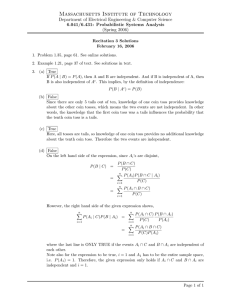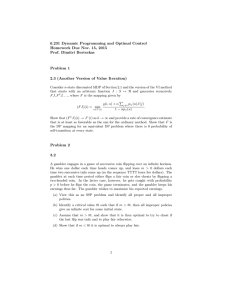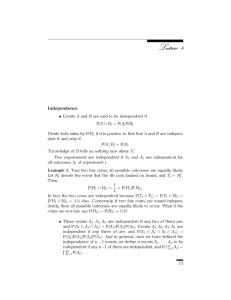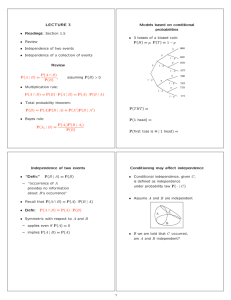Distribution of Runs in Gambler’s Ruin Gregory J. Morrow
advertisement
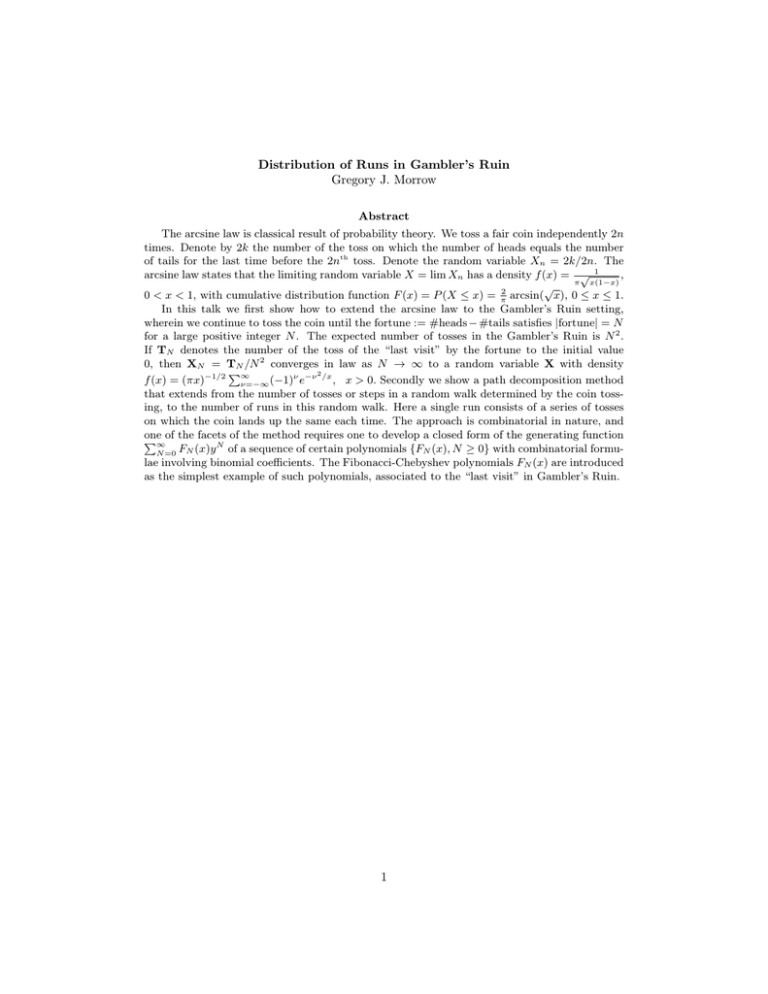
Distribution of Runs in Gambler’s Ruin
Gregory J. Morrow
Abstract
The arcsine law is classical result of probability theory. We toss a fair coin independently 2n
times. Denote by 2k the number of the toss on which the number of heads equals the number
of tails for the last time before the 2nth toss. Denote the random variable Xn = 2k/2n. The
arcsine law states that the limiting random variable X = lim Xn has a density f (x) = √ 1
,
π x(1−x)
√
2
0 < x < 1, with cumulative distribution function F (x) = P (X ≤ x) = π arcsin( x), 0 ≤ x ≤ 1.
In this talk we first show how to extend the arcsine law to the Gambler’s Ruin setting,
wherein we continue to toss the coin until the fortune := #heads − #tails satisfies |fortune| = N
for a large positive integer N . The expected number of tosses in the Gambler’s Ruin is N 2 .
If TN denotes the number of the toss of the “last visit” by the fortune to the initial value
0, then XN = TN /N 2 converges in law as N → ∞ to a random variable X with density
P
ν −ν 2 /x
f (x) = (πx)−1/2 ∞
, x > 0. Secondly we show a path decomposition method
ν=−∞ (−1) e
that extends from the number of tosses or steps in a random walk determined by the coin tossing, to the number of runs in this random walk. Here a single run consists of a series of tosses
on which the coin lands up the same each time. The approach is combinatorial in nature, and
one
of the method requires one to develop a closed form of the generating function
P∞of the facets
N
of a sequence of certain polynomials {FN (x), N ≥ 0} with combinatorial formuN =0 FN (x)y
lae involving binomial coefficients. The Fibonacci-Chebyshev polynomials FN (x) are introduced
as the simplest example of such polynomials, associated to the “last visit” in Gambler’s Ruin.
1

